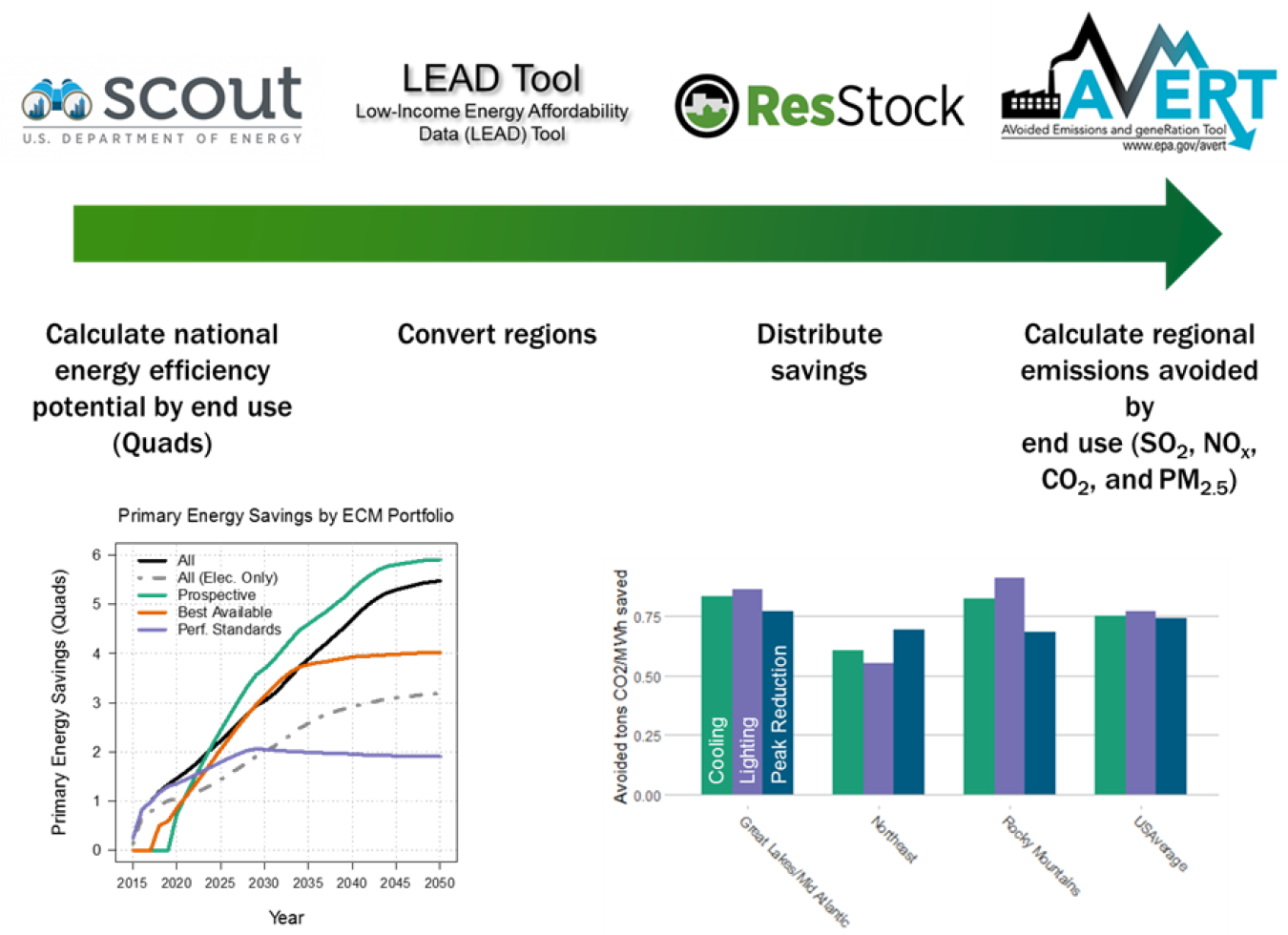Evaluates how residential energy conservation measures reduce energy consumption and reduce emissions.
October 2, 2018
The U.S. residential building sector is responsible for thirty-eight percent of electricity use, as well as for 49%, 8%, 19% and 2% of U.S. SO2, NOx, CO2 and PM2.5 emissions, respectively. The residential building sector is also a key target of customer funded energy efficiency programs, which have typically been designed to reduce energy consumption (kWh). Today, energy efficiency is also being used to meet air emissions goals. However, not every kWh saved has the same mitigation potential. The goal of this work is to evaluate energy efficiency potential in the U.S. residential building sector and determine how energy conservation measures (ECMs) that reduce electricity consumption correlate to air emissions reductions. To assess energy efficiency potential, this analysis uses Scout, a software program developed by the U.S. Department of Energy that estimates the energy and CO2 impact potential of various ECMs on the U.S. residential and commercial building sectors. Here, Scout is first used to assess the total long term national energy (electricity, gas, and oil), CO2, and cost savings of deploying residential ECM portfolios. Then, electricity savings results from Scout in 2021 are used to assess the regional differences in emissions reductions with the AVoided Emissions and geneRation Tool (AVERT) model from different end uses. Better understanding the relationship between ECMs and cost-effective emission reductions will enable states, municipalities and other interested parties to meet multiple policy objectives through energy efficiency.

